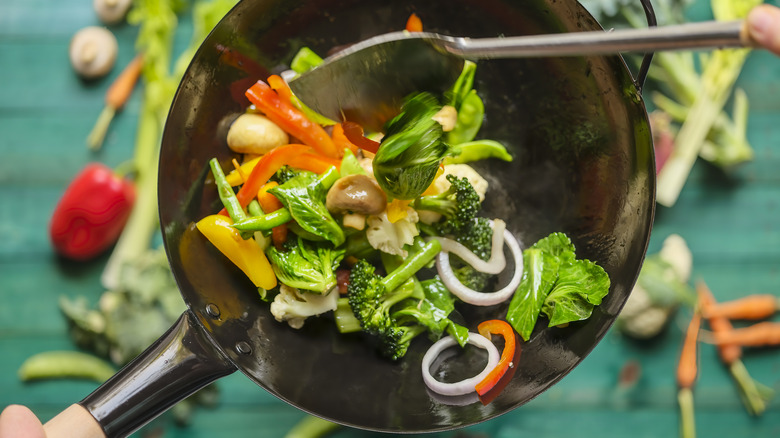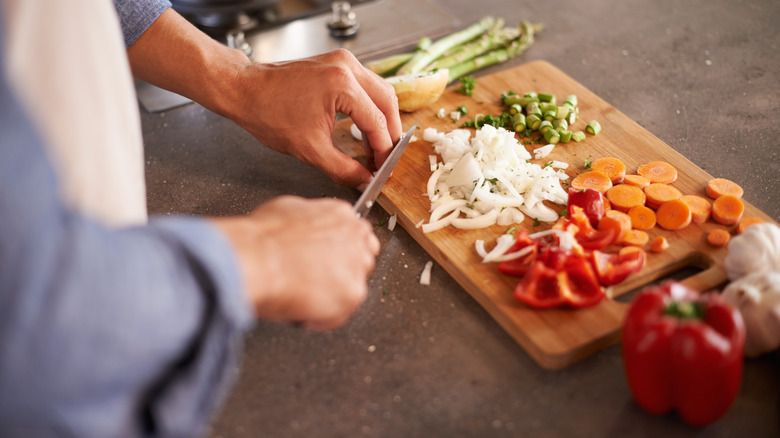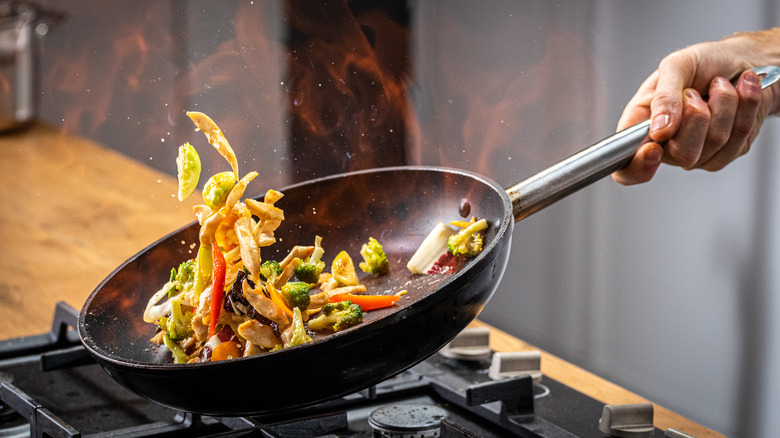Why Your Sauteed Vegetables Are So Soggy (And How To Fix It)
Sautéing is one of the fastest ways to get vegetables on the dining table. Plus, they're delicious. Whether you're serving them with a large hunk of meat, a starchy casserole, or simply paired with a fried egg and hot sauce, sautéed vegetables are ideal to round out a meal. Unfortunately, vegetables can get soggy if they're not prepared properly, especially in a sauté. There are several ways to avoid this unappetizing result, and the quickest method happens before you even turn on the stove: Cut the vegetables properly.
Why does it matter how the vegetables are cut? Because sautéing is such a fast cooking method. Cooks must find a way to ensure vegetables cook evenly in the short amount of time they're in the pan. The easiest way to achieve this is to control the amount of surface area that is exposed to heat. Since every vegetable has a different density and surface area, though, this can be tough to master. Let's get into how to prepare these different types of veggies, to ensure dinner doesn't come out soggy.
Vegetable prep is key
Even if you're sautéing just one type of vegetable, improper cutting almost guarantees they'll be unevenly cooked. At best, you'll have to pick through burned, limp, and raw pieces for the few successfully sautéed tidbits — at worst, it'll all be garbage. So, how do you cut vegetables to ensure that all pieces get cooked at the same rate?
For root vegetables like carrots and squash varieties like zucchini, cut the vegetable into uniform cubes of up to half an inch. This makes for a satisfying bite. Thin slices, which cook up quickly, can also be nice, especially if you're pressed for time. Slice them at a diagonal to expose even more surface area per slice, as opposed to cutting them perfectly crosswise. Make sure to brush up on your knife skills as well, to have the best possible control over your tools and prevent injury.
If the vegetable you're working with is particularly watery — think bell peppers, cabbage, and the aforementioned zucchini — thin slices may not be as enjoyable to eat. They might get too mushy, and even fall apart during the cooking process. A simple salting trick can prevent this disastrous sogginess: pre-salting. This process draws out a significant amount of liquid, making the veggies firmer and more able to withstand high heat.
Keep it hot, keep it moving
Cutting the vegetables properly isn't the only way to keep them from getting soggy during a sauté. Here's another key tip: Whether you rinse the vegetables before or after cutting them down to size, you must make sure to dry them thoroughly. Adding wet vegetables to the pan is a surefire way to get a soggy meal.
You can also prepare the cooking vessel itself, and carefully consider the amount of heat that will be applied. Use as wide a pan as possible, like a wok or a large skillet, to reduce overcrowding. When vegetables are piled too close to each other, they tend to steam instead of sauté or fry, which makes for sogginess. High heat can help cook the vegetables much more quickly while also driving off whatever liquid leaches out into the pan.


